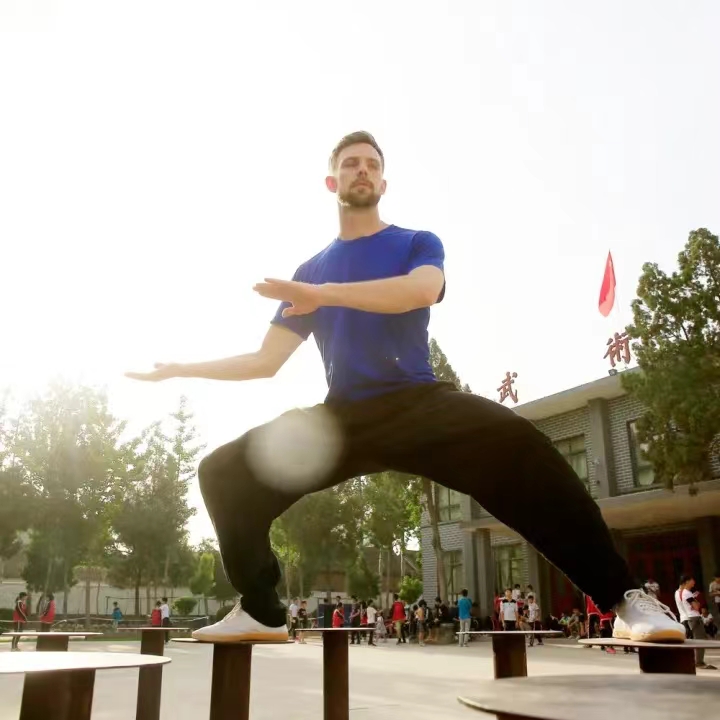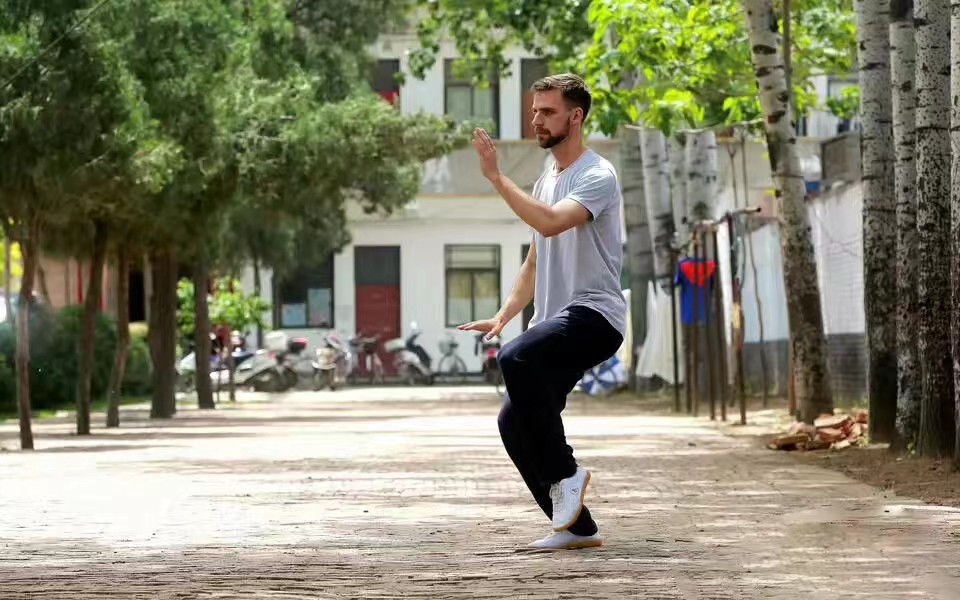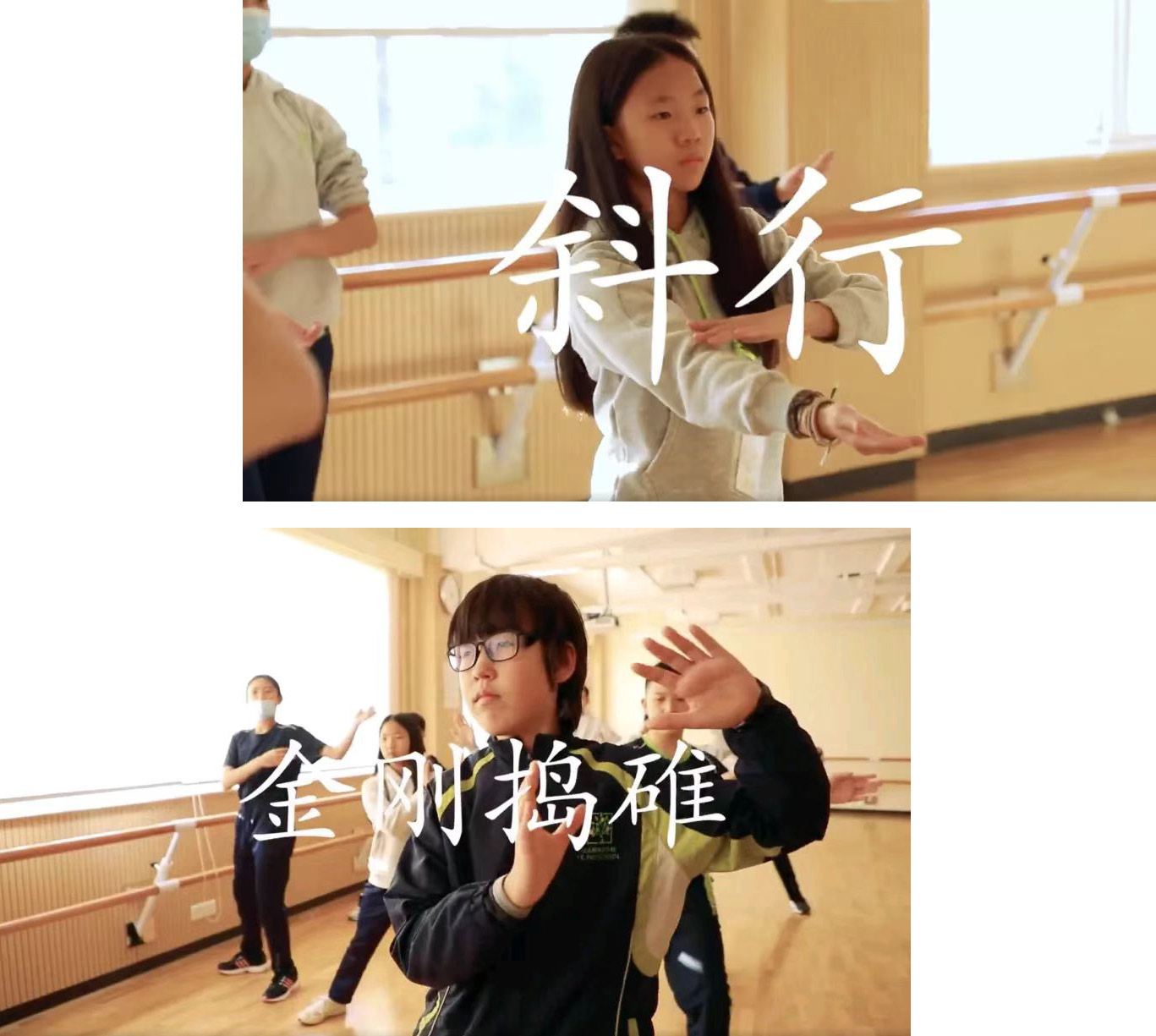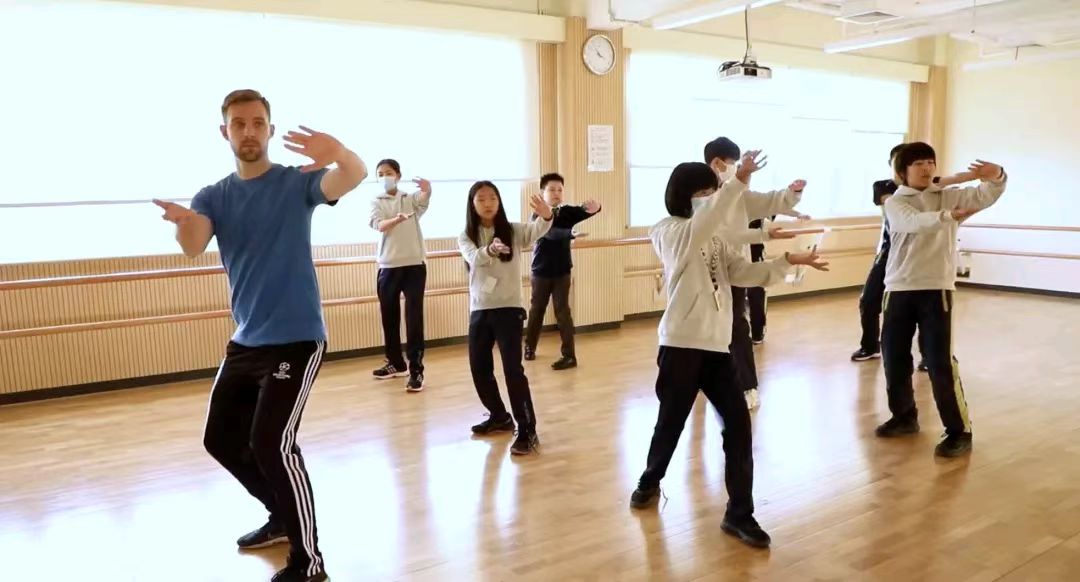As everyone is spending time working and learning from a computer screen, while being under the pressures of being home all day, it is also important to take the time to relax and exercise. Though it can be hard to find the space or equipment to do typical sports activities, such as riding a bike or swimming, some middle school students and teachers are finding solace in practicing the traditional Chinese martial art Taichi.
Some of these students may have even participated in the Middle School’s Taichi CCA class last semester– taught by international teacher Daniel Nichols. Fluent in Chinese, Daniel has spent several years in various parts of the country, including two years studying Chen-style Taichi in its historical birthplace while working at the same time.
Pao School’s Co-Curricular Programme (CCA) is a unique aspect of life at the school and an important part of the philosophy of whole-person development. At the Middle School, students are encouraged to explore new interests and develop diverse talents, before they specialise in specific areas later on in their academic career. During the year, students may switch activities and explore new passions by selecting activities from a wide variety of options spread across four areas: Chinese cultural activities, sports, performing and visual arts, and enrichment activities.
In addition to Taichi, the students have a number of other Chinese cultural activities to choose from, including learning to play traditional instruments like guzheng or guqin, learning about contemporary Chinese film and literature, and preparing for Chinese drama productions.
CCAs are a fantastic way of imparting knowledge that can be acquired in a non-traditional way,
with a large variety of choices – students can hopefully find a spark or interest [in something].
——Daniel Nichols
“Learning Taichi is like learning how to write: look, write, cover, repeat,” Daniel says. In his classes he often starts by modelling the movements, then practising together, before allowing students to try independently so that he can observe and give feedback. In later classes, the students begin by reviewing what they have learned in the previous lessons, reinforcing their knowledge and building muscle memory. In the semester-long CCA, the students began learning the first fifteen movements of the Old Frame 1 form. As many students were beginners, the main purpose was to give them a foundational understanding of Taichi and inspire them to learn more in the future.
Exploring Taichi in its birthplace


Daniel Nichols, originally from the UK, has spent a long time living in various parts of China after first moving to the region in 2009. Originally motivated by a desire to learn Chinese – after being “bit by the language bug” during a year spent in France – he moved to Gaoxiong as a complete beginner. It was in this time, he says, that he “really learnt Chinese” and was later inspired to travel around China.
“When I was travelling around China, I went for a few days to visit Chenjiagou and eventually decided to move there to try a different aspect of Chinese culture,” says Daniel, who in his time there decided to train a little with a local Taichi Grandmaster – entirely in the Chinese language. The experience greatly impacted him, as he was just beginning to learn Chen-style Taichi and felt that there was much he could learn in the village. He was also interested in the change of pace, in comparison to living in Gaoxiong, and historical roots of the area, saying, “The region has a very rich culture, it’s very different, and I wanted to experience authentic village life. I thought if I don’t do it now, I’ll never do it.”

However, most importantly, Chenjiagou is also the home of Chen-style Taichi – a major factor in Daniel’s decision to settle in the area. Considered by some to be the oldest form of Taichi, Chen-style Taichi incorporates more explosive movements into its forms. For those unfamiliar with the sport, this means that though the style is still slow moving like other forms of Taichi, it also shares similarities with Kung fu through its quick kicks and punches.

Daniel remembers originally starting training to sooth old injuries, but was soon dedicated to learning it intensely. In his time studying in Chenjiagou, he lived in modest surroundings, saying he only trained, ate and slept during that time. Alongside the challenges of getting used to the harsh climate, Daniel says that it was particularly challenging to learn a new thing as an adult, even sometimes forgetting what he had just learned earlier in the day, so he often had periods of frustration – though says it is important to acknowledge that you are frustrated out of a desire to improve. This process also helped him understand the learning process from a student’s point of view, which can serve to support his future teaching.
After leaving Chenjiagou, Daniel took his passion for Taichi back to the UK. During his two-and-a-half-year return, he introduced the Chen-style to older people in his hometown and also to students in a CCA-style class at his previous school. It was in this time that he refined his Taichi teaching methods and learned the best ways to ensure progress for each lesson.
Developing a new mentality

“In the CCA, the most important thing I learned is not the Taichi movements, but a new mentality – to face difficulties without flinching and calmly overcome them,” says Jack (Y8). Overall, he feels that Taichi is different to other activities and sports as it is more nurturing and relaxing. As he practiced Taichi he was able to free himself from the stress of a busy day of study, relax for a while, and be well prepared for homework.
Jack also feels that the class was taught well, saying, “Mr. Nichols is a very competent teacher, sometimes a little stern, but it was also for our sake. His classes are also very interesting, with various activities and so on.”
Lance (Y8), has studied Taichi for two or three years and was excited for the opportunity to learn new methods and movements – particularly from a teacher who had studied Taichi in Chenjiagou. During the Shanghai lockdown, Lance has continued to practice Taichi with his family, saying, "Taichi calms us down, so it helps us with the pressure."


Alongside giving students the chance to exercise and relax in the school day, learning Taichi can also be beneficial for developing students’ confidence and teamwork. For example, the students are given the chance to lead the classes movements themselves as they are learning – meaning that they must remember the moves themselves and show their classmates what to do. Through this they can develop a sense of self-belief, says Daniel, "At first one of the students didn’t have the confidence to lead the class. However, with the encouragement and support of doing it together as a team, she was able to lead the group through a form at the end of class - almost without any assistance. You could see she was like ‘wow, I’ve done this.’ That’s why I love teaching."